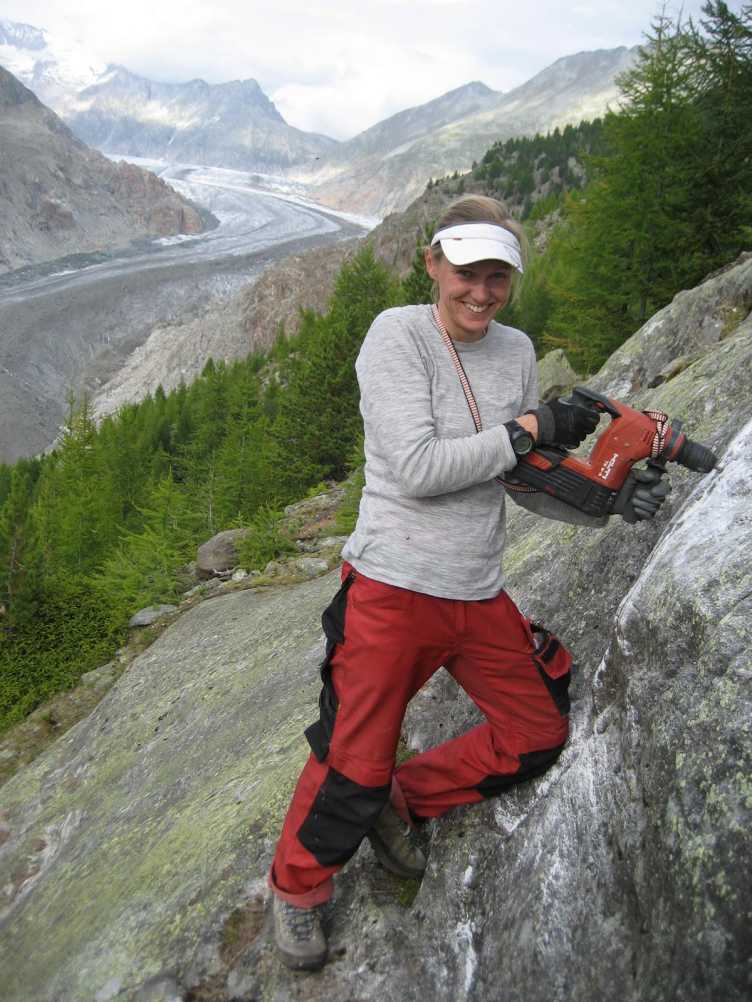Research lab Aletsch Glacier
The doctoral student Franzi Glüer researches the development of alpine rock slope instabilities in response to changing climate and glacier retreat of the Great Aletsch Glacier.
The Great Aletsch Glacier is retreating rapidly and the steep, adjacent rock slopes are left without ice and therefore are suddenly exposed to varying surface temperatures, changing moisture conditions, and internal stress changes. The area is a unique possibility to study the interaction between the fast retreating Aletsch Glacier and its adjacent rock slopes.

Franzi Glüer's doctoral project is part of the larger research project “Paraglacial Rock Slope Mechanics” and her part aims to analyse current rock slope activity associated with changing climate. When and where do slope failures or new fracture systems develop? What are the dominant hydro-mechanical factors controlling the rock slope response to ongoing deglaciation?
In 2013 the project team installed a monitoring system in the surroundings of the Great Aletsch Glacier tongue between Bettmerhorn and Oberaletsch. This monitoring system comprises two total stations, more than 80 reflector mirrors, several permanent GPS sensors, meteo sensors, seismometers, and inclinometer. The reflector mirrors' location is measured and calculated hourly.

The broader impact of this project, however, reaches beyond the scientific community. When in 2015 and 2016 the large rock slope instability of Moosfluh accelerated immensely, huge cracks developed, rockfall was striking, and the slope became of large public interest. The existing monitoring network was extended and an early warning system was established. Through that, the research project can now contribute to natural hazard assessment because it offers a broad framework for understanding processes associated with the development of alpine rock slope instabilities in response to changing climate and glacier retreat.
The two journalists Xavier Lambiel and Xavier Filliez from the newspaper “Le Temps” accompanied Franzi Glüer for a day at her study area. The resulting report shows the components of the local monitoring system and visits current drilling installations for research in the Great Aletsch Glacier area.
